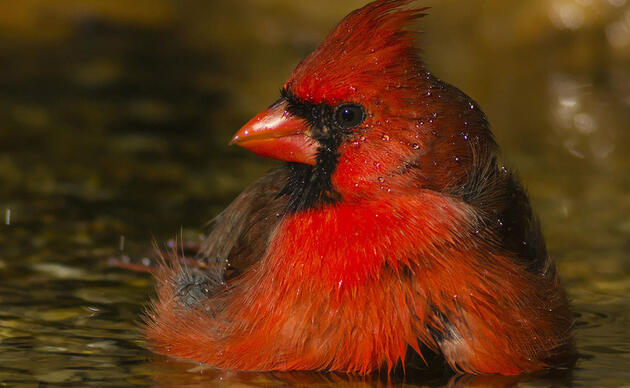Everglades Birds Are Talking. But Are We Listening?
Roseate Spoonbills, Snowy Egrets, and White Ibis are not just beautiful and iconic inhabitants of the Everglades. They are important indicators of ecosystem health. Each year, Audubon Florida's Everglades Conservation Team evaluates population numbers and nesting data to understand the progress of Everglades restoration.
Audubon's scientists have finished evaluating the 2013 data. Our team is pleased to report that there were significant signs of progress for wading birds in the Everglades during this time.
Nesting efforts in 2013 were 57% higher than the average of the last three years. Over 48,200 wading bird nests were recorded.
The most encouraging data was from areas where restoration projects have improved freshwater flows. Early results from habitat impacted by the new C-111 Spreader Canal Western Project are providing hope for Florida's wading birds.
The recently completed C-111 Spreader Canal Western Project created a nine mile hydraulic ridge that increases natural flows into Taylor Slough, a critical flow path that carries water through the heart of Everglades National Park and into Florida Bay. Data from the first year of operation suggests measurable improvement in Roseate Spoonbill habitat - one of Audubon's priority Atlantic Flyway species.
While restoration work is improving Everglades habitat, important work remains. Despite the positive 2013 nesting data, wading bird numbers are still well below restoration targets. Some species are doing better than others. Great Egrets and White Ibis have shown stable population growth, while populations of smaller birds like Little Blue Heron, Tricolored Heron, and Snowy Egrets have declined.
The future of Florida's wading birds are dependent on projects that restore the natural flow of freshwater to the Everglades. Audubon Florida is working to make sure that key restoration projects like the Central Everglades Planning Project and the next phase of the Tamiami Trail Bridge are implemented as quickly as possible.
For more information, please download Audubon's latest Fact Sheet: 2013 Wading Bird Nesting in the Everglades. Please feel free to print and share at your next Audubon Chapter meeting or community event.
How you can help, right now
Donate to Audubon
Help secure the future for birds at risk from climate change, habitat loss and other threats. Your support will power our science, education, advocacy and on-the-ground conservation efforts.
Become a Monthly Donor
Donating monthly is flexible, easy and convenient and makes you a champion birds can count on, no matter the season.
Volunteers Needed
Florida's birds and wildlife need your time and energy. Learn how you can become a citizen scientist or a volunteer at one of our nature centers today.




